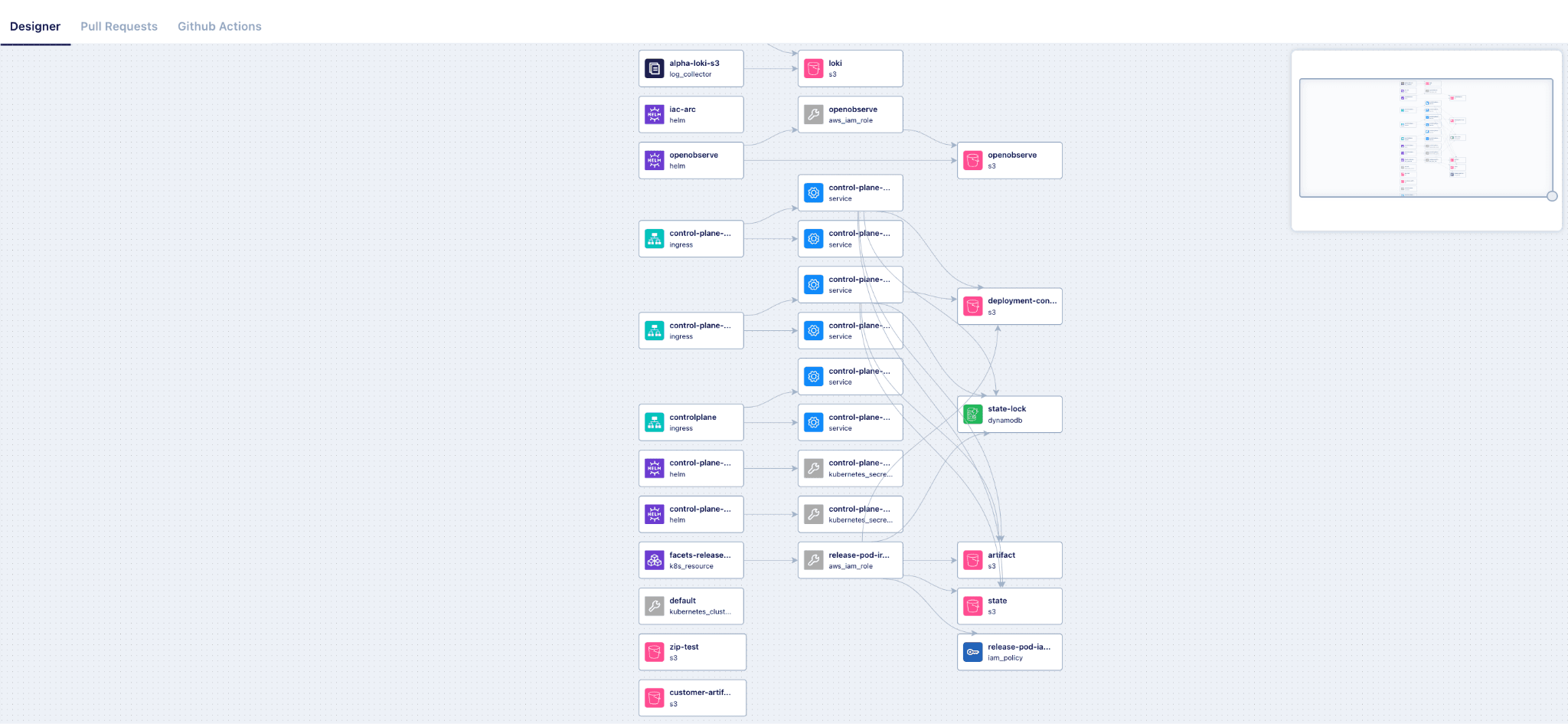GitOps has transformed the way organizations manage infrastructure and application delivery, providing a framework for consistency, automation, and reliability. However, achieving success with GitOps requires adopting its principles correctly and designing practical strategies to avoid common pitfalls that can lead to inefficiencies and errors.
In this blog, we explore GitOps, examine the OpenGitOps standards, and share practical advice to help organizations avoid implementation failures.
How GitOps Became Popular: Parallels with Code Management
Imagine managing your entire infrastructure and applications the same way developers manage code—using a single, reliable system that tracks every change, lets you roll back when needed, and ensures everything is always in sync. That’s the promise of GitOps.
GitOps extends the familiar principles of Git-based code management to infrastructure and software delivery. By declaring the desired state of systems in Git and using automation to ensure the real-world state matches, GitOps provides a powerful way to simplify operations. Developers loved Git for its ability to version, audit, and roll back changes easily—and now, with GitOps, the same benefits are applied to infrastructure.
At its core, GitOps delivers on four key promises:
- A single source of truth: All infrastructure and application configurations live in Git, just like your code.
- Version control for infrastructure: Every change is logged, making it easy to track who did what and when.
- Automatic reconciliation: If something drifts out of place, it’s automatically brought back to the desired state.
- Rollback safety nets: When things go wrong, you can instantly revert to a stable, known good state.
The familiarity of Git, combined with the simplicity of automation, made GitOps an instant favourite for teams trying to streamline their delivery processes.
But, like all great things, GitOps comes with its challenges. Many organizations jump on the GitOps bandwagon without fully understanding how to adapt its practices or implement them effectively. As GitOps gained popularity, so did the need for thoughtful, tailored systems to make it work smoothly in diverse and complex environments.
And that’s where the real story begins: not just adopting GitOps but doing it right.
Common Mistakes in GitOps Implementation
Modern cloud environments are a labyrinth of complexity. Consider the sheer types of artifacts/concerns that make up a typical application ecosystem—services, cloud resources, virtual machines, PaaS components, monitoring setups, alerting systems, database schemas, routing rules, secrets, and variables, to name just a few. In theory, GitOps can and should be applied to all these types of artifacts/concerns. However, in practice, many organizations fall short, leading to fragmented or incomplete implementations.
- Misunderstood Principles: GitOps is more than just automating deployments—it’s a system that ensures critical change management with strong guarantees. Often, teams are not equipped with the right principles to build a GitOps system.
- Disjointed Systems: Infrastructure, application configurations, and delivery pipelines exist in silos, making it hard to track how changes in one area affect others negating the power of GitOps
- Inconsistent States: Environments become inconsistent because there’s no unified source of truth across concerns. This leads to configuration drift, unpredictable behaviors, and manual firefighting.
- Manual Wiring: Teams spend significant time wiring various GitOps components together manually, increasing the risk of errors.
- Limited Visibility: With so many changes flowing through GitOps, without any centralized view, debugging and incident recovery become time-consuming and error-prone.
For example, consider a team that manages application code with GitOps but infrastructure with IaC tools, and configurations manually. This fragmented approach undermines the benefits of GitOps by introducing complexity and inefficiencies.
Advice for Building Your Own GitOps Systems
1. Adopt the right standards: OpenGitOps
The OpenGitOps initiative, established by the GitOps Working Group, provides a clear and universal set of principles for adopting and scaling GitOps practices.
- Declarative: Systems must express their desired state in a declarative format.
- Versioned and Immutable: Desired states must be stored in version-controlled repositories with immutability.
- Pulled Automatically: Software agents must automatically fetch desired states from the source of truth.
- Continuously Reconciled: Systems must continuously monitor and align actual states with desired states.
While the OpenGitOps standards provide a clear framework for implementing GitOps, they primarily address the foundational principles—what GitOps should look like in theory. In practice, GitOps is a way of working that requires organizations to build the right “system” around these principles. This involves answering critical operational questions, such as what to store in Git, how to manage complex configurations, and how to build a robust reconciliation system to keep environments aligned.
2. Implement the right way: avoid common errors
a. Introduce Abstractions That Translate Into Implementations
A successful GitOps system relies on abstractions that simplify complex representation for developers and operators. These shared abstractions foster ease of use and collaboration. These abstractions should:
- Define what needs to be done (the "desired state") rather than how to do it.
- Allow platform engineering teams to create higher-level constructs (e.g., "services" or "databases") that are translated into underlying implementations like Kubernetes manifests, Terraform modules, or configuration files.
- Spare developers from the cognitive load of details but allow power users all the flexibility
b. Leverage Declarative Definitions for All Concerns
The declarations in your GitOps system should encompass all operational concerns to achieve consistency and easy rollback. The declarative definitions should span across
- Infrastructure as Code (IaC): Define infrastructure components (e.g., servers, storage, databases) using declarative
- Kubernetes Manifests: Manage containerized workloads with YAML files that specify Deployments, Services, and other Kubernetes objects.
- Similarly, for CI/CD, Configuration Management, IAM and Image wiring and any other concern that completes the environment definition.
c. Ensure a Way to Wire Things Together
A GitOps system must provide a mechanism to wire components together declaratively. This capability to interconnect resources makes it possible to maintain a cohesive, functioning system where changes propagate across dependencies automatically.
For instance:
- A database connection string output from Terraform can be wired into a Kubernetes ConfigMap for an application.
- An IAM role provisioned for a service can be referenced in a CI/CD pipeline configuration.
- Outputs from IaC tools can be fed as environment variables into runtime configurations.
d. Combine Unified Outputs With Flexible Execution
A well-designed GitOps system translates declarative definitions into various execution models, such as:
- IaC Execution: Automating the provisioning of infrastructure resources like VMs, databases, or networking.
- Kubernetes Manifests Creation: Generating YAML definitions for containerized workloads and applying them to clusters.
- Orchestrate Image Wirings, CI/CD, Tool configuration through your preferred tools
e. Focus on Extensibility
Your GitOps system should support extensions and customizations to meet evolving needs and make it future-proof. Teams should be able to:
- Add new resource types or configurations easily.
- Integrate or replace external systems like cloud providers, CI/CD pipelines, or monitoring tools without touching every layer
- Customize workflows while maintaining adherence to GitOps principles.
How Facets Help Organizations Achieve True GitOps

Facets.Cloud makes adopting GitOps straightforward by embedding its principles directly into the platform. Instead of requiring organizations to figure out the details themselves for complex multi-project setups, Facets builds the OpenGitOps standards into its core and provides a ready-to-use framework for achieving true GitOps.
Adapting OpenGitOps standards without reinventing the wheel
1. Declarative Blueprints
“A system managed by GitOps must have its desired state expressed declaratively.”
At the heart of Facets is the Blueprint, a declarative representation of your entire architecture. Blueprints define:
- Resources like services, databases, and caches.
- Relationships and dependencies between components.
- Any declarations that need to be centrally managed like a database schema, dashboards, alerts
Blueprints are stored in JSON, providing a single source of truth for infrastructure, code, and configurations.


2. Versioned and Immutable Histories
“Desired state is stored in a way that enforces immutability, versioning and retains a complete version history”
Blueprints in Facets are stored in Git repositories, ensuring:
- Version Control: Every change is tracked, offering traceability and rollback capabilities
- Immutability: States cannot be altered once committed without creating a new commit.
This fosters trust, transparency, and security across environments and ensures traceability of releases and rollbacks.

3. Automated State Synchronization
“Software agents automatically pull the desired state declarations from the source.”
Facets Platform Orchestrator automates the reconciliation process by:
- Pulling changes to the Blueprints from Git repositories.
- Applying environment-specific overrides
- Generating and applying Infrastructure-as-Code (IaC) scripts to manage resource additions or modifications
- Ensuring downstream tools like monitoring, and alerting are correctly configured

Facets Orchestrator ensures that the automation and tool configuration state matches the declared state for every environment in the reconciliation process.
4. Continuous Reconciliation
“Software agents continuously observe the actual system state and attempt to apply the desired state.”
Facets continuously monitors and reconciles the state of environments through:
- Scheduled Updates: Regular synchronizations ensure environments remain consistent.
- On-Demand Reconciliations: Teams can trigger updates for specific resources or entire environments.

Beyond OpenGitOps: Facets’ Unique Enhancements for complex setups
While the OpenGitOps standards lay a solid foundation, implementing GitOps in large organizations with complex setups is far from straightforward. It requires adapting principles to diverse scenarios, supporting unique workflows, and building robust systems for seamless adoption. Facets takes a step further, offering enhancements designed specifically to address the challenges of scaling GitOps in intricate environments.
- Lowering Barrier of Entry: Facets provides pre-built templates and workflows to lower the barrier to entry for GitOps. This guided setup ensures best practices are followed from day one.
- Insights on Reconciliation: Dashboards provide visibility into resource states, pending changes, and reconciliation logs. Teams can easily identify which commit IDs are live, and what is pending per environment and resolve discrepancies
- Controlled Reconciliation: For actions that could disrupt systems, such as database deletion or syncing information back to Blueprints, Facets enforces manual approval processes to ensure changes are deliberate and carefully considered. Additionally, it offers controlled conflict resolution for scenarios like accidental manual changes or emergency fixes, helping teams handle exigencies without compromising system integrity.
- Extensibility: Teams can define custom resource types and seamlessly integrate them into Blueprints, expanding GitOps capabilities beyond standard practices. For example, Facets enables GitOps-driven database management and the distribution of standardized dashboards, ensuring the platform adapts to unique workflows and organizational requirements.
- Intuitive UI-Driven Workflows: A user-friendly interface allows non-experts to visualize the connection between declarations and their real-world manifestations, streamlining access to critical information. The platform also offers tailored interfaces for different personas, such as developers, operations teams, and architects, combined with role-based access control to reduce cognitive load and ensure focused, relevant interactions.
Conclusion
As modern software systems grow increasingly complex, so does modeling them well in GitOps. We’ve observed many organizations using GitOps as a catch-all term, often without a clear understanding of its principles. This poor implementation results in several critical issues:
- Configuration Drift and Inconsistencies: Without a unified approach, environments can become unpredictable, leading to misaligned configurations and drifts that are costly to manage.
- Increased Risk of Human Error: Manual interventions and ad-hoc changes bypass GitOps workflows, introducing errors that can lead to downtime, outages, or security vulnerabilities.
- Prolonged Recovery Times: Without clear versioning and rollback capabilities, recovery from incidents becomes slower and more expensive, increasing operational risks.
- Deployment Bottlenecks: Slow, risk-laden deployments that undermine team velocity and create a culture of fear around releasing new changes
The cost of not implementing GitOps correctly goes beyond operational inefficiencies—it impacts business agility, team morale, and customer trust.
Transform your GitOps journey with Facets—start today.


